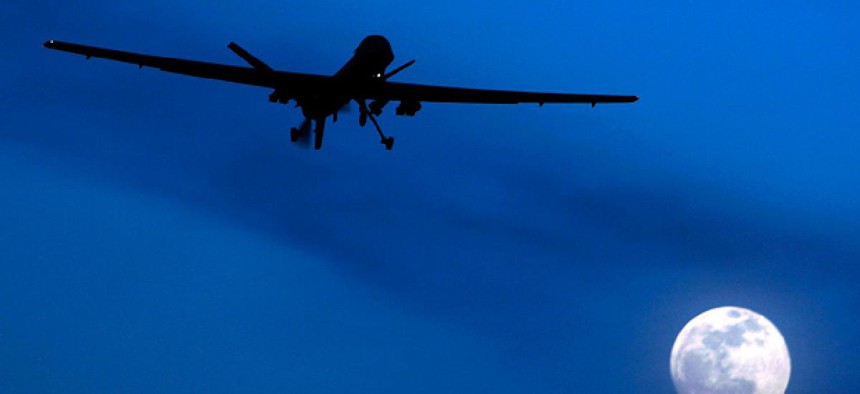What to make of U.S. drone strikes in Pakistan

Kirsty Wigglesworth/AP File Photo
A new report excoriates the United States' unmanned aerial strikes against terrorists in South Asia. But are there better alternatives?
A new report, "Living Under Drones," jointly authored by Stanford University and New York University -- and reviewed yesterday by Conor Friedersdorf here at The Atlantic -- is harshly critical of the drone campaign in Pakistan. The report argues that the U.S. narrative of drone strikes -- precise, accurate, and limited -- is false. Citing 130 interviews and a review of media reports, the authors argue that the civilian toll from drone strikes is far higher than acknowledged, that many problems with the drone campaign go unreported, and that more government transparency is essential to gaining a better understanding of the campaign and its consequences.
On that last point, the authors are absolutely right -- more transparency about targeting and effects would help everyone understand the consequences of drone strikes in Pakistan. And there are absolutely serious downsides to these strikes (some of which have been explored here already). But the report then makes some questionable claims based on incomplete data, and seems to argue that the drone campaign should be paused or radically altered. Those arguments are not well supported.
For starters, the sample size of the study is 130 people. In a country of 175 million, that is just not representative. 130 respondents isn't representative even of the 800,000 or so people in the Federally Administered Tribal Areas (FATA), the region of Pakistan where most drone strikes occur. Moreover, according to the report's methodology section, there is no indication of how many respondents were actual victims of drone strikes, since among those 130 they also interviewed "current and former Pakistani government officials, representatives from five major Pakistani political parties, subject matter experts, lawyers, medical professionals, development and humanitarian workers, members of civil society, academics, and journalists."
The authors did not conduct interviews in the FATA, but Islamabad, Rawalpindi, Lahore, and Peshawar. The direct victims they interviewed were contacted initially by the non-profit advocacy group Foundation for Fundamental Rights, which is not a neutral observer (their explicit mission is to end the use of drones in Pakistan). The report relies on a database compiled by the Bureau of Investigative Journalism, which relies on media accounts for most of its data. The authors discount the utility of relying on media accounts, since media in Pakistan rely on the Pakistani government for information (reporters are not allowed independent access to the FATA). Even accepting their description of the BIJ data as the most "reliable," these data are highly suspect.
The Living Under Drones report, in other words, has some serious bias issues. But that doesn't mean it should be discarded: the section on social and political blowback from drone strikes is well documented and in line with other research. In summary, the report declares that the use of drones in Pakistan is a campaign of terror, creating severe psychological trauma among residents of the FATA and creating a pervasive environment of fear.
Read more at The Atlantic.





